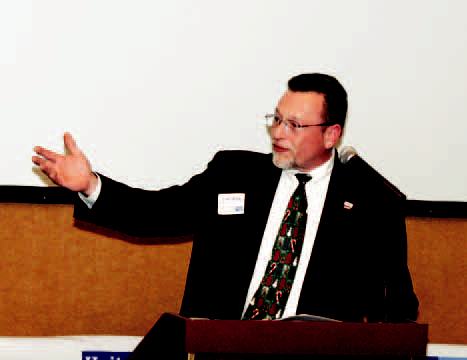United Way revising charity funding model
by Jacob Barker
December 10, 2010

“They don’t have to worry about going through another allocation process in the spring of 2011,” said Tim Rich, executive director of Heart of Missouri United Way. “They can focus on securing and stabilizing their own organizations and generating their own funds.”
That promise of identical funding, though, also gives the United Way time to change how it operates. The organization is in the process of moving toward what is known as a “community impact model.” Rather than just funding charities and assessing their programs’ individual merit, the local United Way wants to move to a model that establishes broad community goals and funds organizations based on how their programs can contribute to them.
“We have all these agencies that are (creating) different outcomes that are not aligned toward a particular impact that we want to affect over time,” Rich said.
In October, the board of directors adopted the community impact structure, and the United Way has already hired a community impact director, Alexa New, who started work Dec. 8.
The next step is to create community impact advisory councils. During the next 18 months, those councils will develop the goals that will be the basis for evaluating and funding local agencies’ programs. In a few years, the entire structure for funding local nonprofit programs will have been revamped, Rich said.
“It radically changes the member agency model, which some have said is like a club,” he said. “If you’re an agency that gets funding from United Way, you’re essentially going to get funded forever. That’s not going to be the case anymore.”
However, it makes those dependent on the current system a little apprehensive.
“It makes (our member agencies) very nervous,” Rich said. “But one of the things we’ve done and specifically intended to do is get them in on the conversation early.”
Local agencies were mostly confident their services will fit into the community impact model, but they are still fuzzy on what the model will actually look like.
“It’s actually beneficial to us, I think, in the long run,” said Marissa Todd, the project director at the Voluntary Action Center. “But it’s kind of a waiting game to see what ‘community impact’ is going to look like.”
Revamping the model will potentially allow more organizations to receive funding, Rich said. It’s difficult for new agencies to become United Way members and thus get funding for their programs, he said. The community impact model, though, will open the door to new agencies if their programs contribute to the community goals.
It will also broaden the scope of the services United Way provides and allow the organization to engage more people about the real needs of the community, Rich said.
“Community impact for us means we have to step outside the traditional box of funding strictly health and human service agencies and see if there are other creative strategies to help us get to the goal of lifting people out of poverty,” he said.
For instance, a few years ago the organization began funding a program that offers every child born in Boone County a book each month. The hope is to foster reading skills and create shared experiences among children reading the same books. Some traditionalists might bristle at the thought of resources going to children not born into poverty, but Rich said the broad community benefit should be taken into account.
Ultimately, community impact will leverage evidence from best practices around the country to make permanent differences in the community, Rich said.
“In terms of a long-term change in the future of the folks that we’re serving, that’s the piece that’s been missing,” he said.


